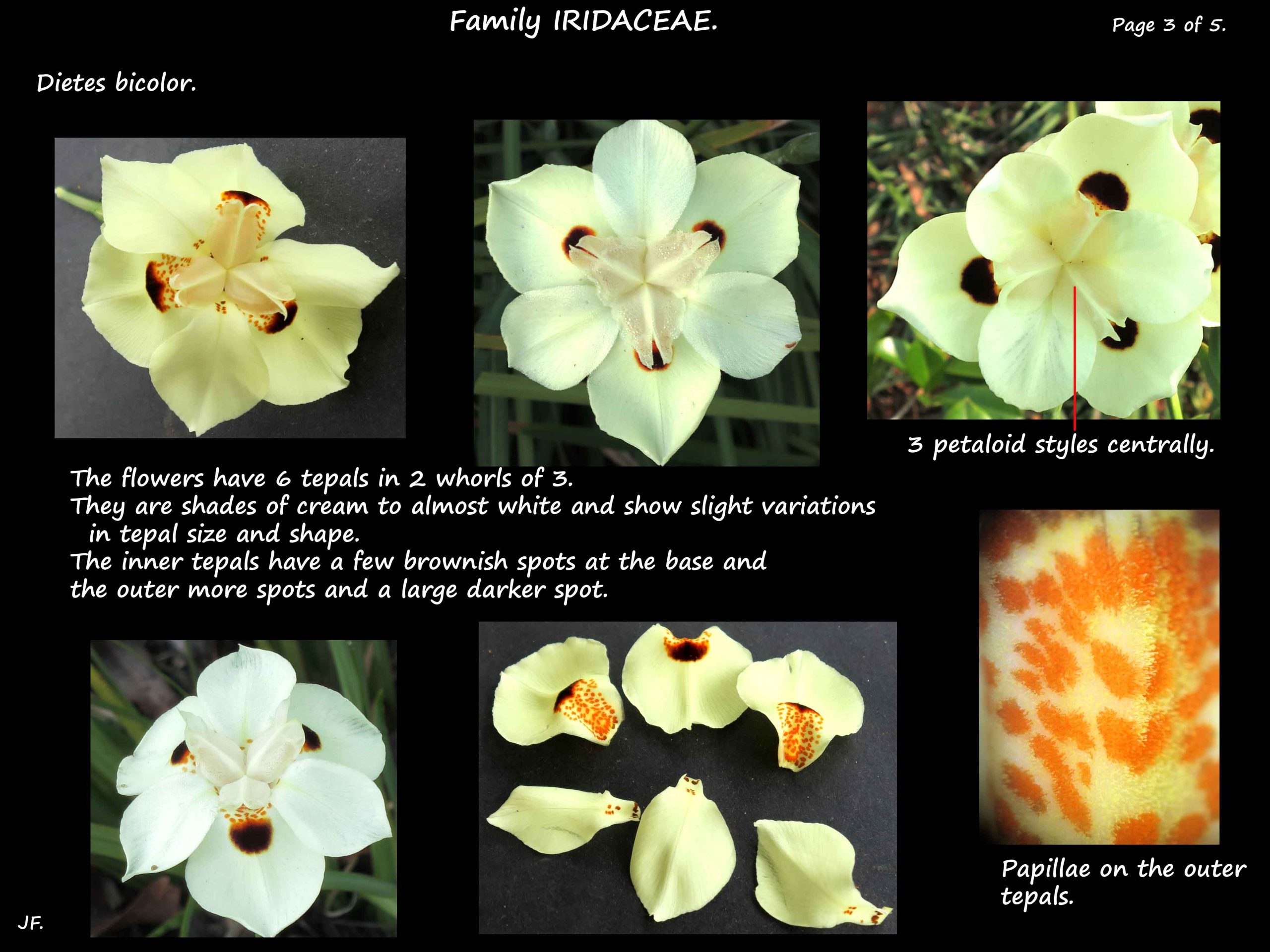Dietes bicolor.
Family Iridaceae > Subfamily Iridoideae > Tribe Irideae.
The Yellow Wild iris is still seen in private gardens but mostly in public spaces.
An evergreen, perennial, clump-forming plant growing from rhizomes.
Clumps grow to about 1 m high and wide but slightly taller in water.
The alternate, upright, narrow leaves form basal fans.
The leaves lie in 1 plane so there is no upper or lower surface (unifacial).
Older and longer leaves tend to arch over.
Inflorescence stalks are branched and hold many buds that open sequentially.
Flowers, 5 to 6 cm across, have a perianth of 6 tepals in 2 whorls of 3.
The tepals are a pale cream to yellow.
The outer three have brownish spots with yellowish edges at the base.
Peripheral to these is a larger and darker area with a paler brown base.
The inner 3 tepals have a few small brownish spots near the base.
The 3 stamens lie opposite the outer tepals and are hidden under the large styles.
They have wide, flat and free bases and anthers opening via slits.
The 3 styles lie opposite the stamens and outer tepals.
They are wide and petal-like with a split tip.
Just under the base of the split is the stigma.
The inferior ovaries have 3 fused carpels and 3 locules.
The numerous ovules in each locule have axile placentation.
The fruit are oblong to ovoid capsules up to 2.5 cm long with dark brown seeds.
J.F.







